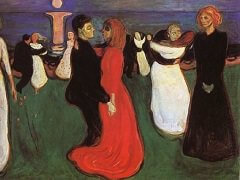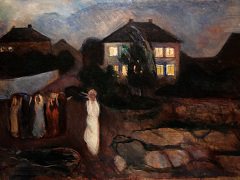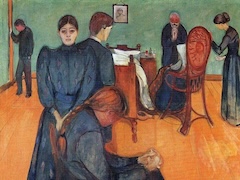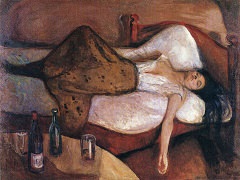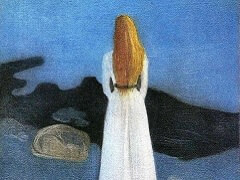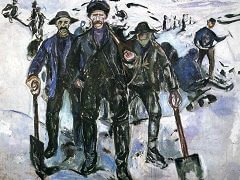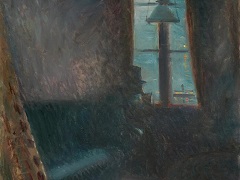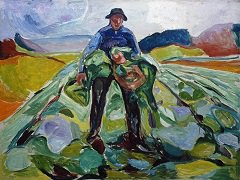Moonlight, 1895 by Edvard Munch

Moonlight, 1895 shows one of Munch's most simplified depictions of the Norwegian coastal landscape in the light of a summer night. Thematically it is related to The Voice, which Munch had painted earlier, in that case with a female figure in the central foreground. Moonlight captures a mood of nature, without human presence. The first thing to catch our attention is the unusual pillar of moonlight, a motif that occurs in several of Munch's pictures. The next is the undulating coastline, which forms a horizontal counterpoint to the strict verticality of the trees. The colours are subdued, but there are clear contrasts between the dark forest floor, the white shore and the intense blue of the water. Details are simplified and subordinated to the overall scheme, but without compromising the landscape's characteristic features and recognisability. Instead of depicting an action, the picture expresses a certain mood. At the same time there is a formal theme in the pillar of moonlight, the strict verticality of the trees, the gentle curves of the shoreline, and the water as a symbol of the masculine and the feminine.
The motif probably derived from the area around Asgardstrand, where Munch stayed this summer. It was a place to which he was very attached. The sea and the landscape both attracted and inspired him, and elements of nature in the region appear in a range of pictures from the 1890s. Running through these images, Munch wrote:
twists the flowing shoreline, beyond lies the sea, which is always in motion, and beneath the canopy of trees varied life unfolds with its joys and cares."
Like Vincent van Gogh's Paintings, Munch's works at times seems to endow his landscapes with animistic qualities.



